The Washington Post published this shocking chart today.
It's got everything to do with the future of community colleges in the US. Source: washingtonpost.com/graphics/2020/…
It's got everything to do with the future of community colleges in the US. Source: washingtonpost.com/graphics/2020/…
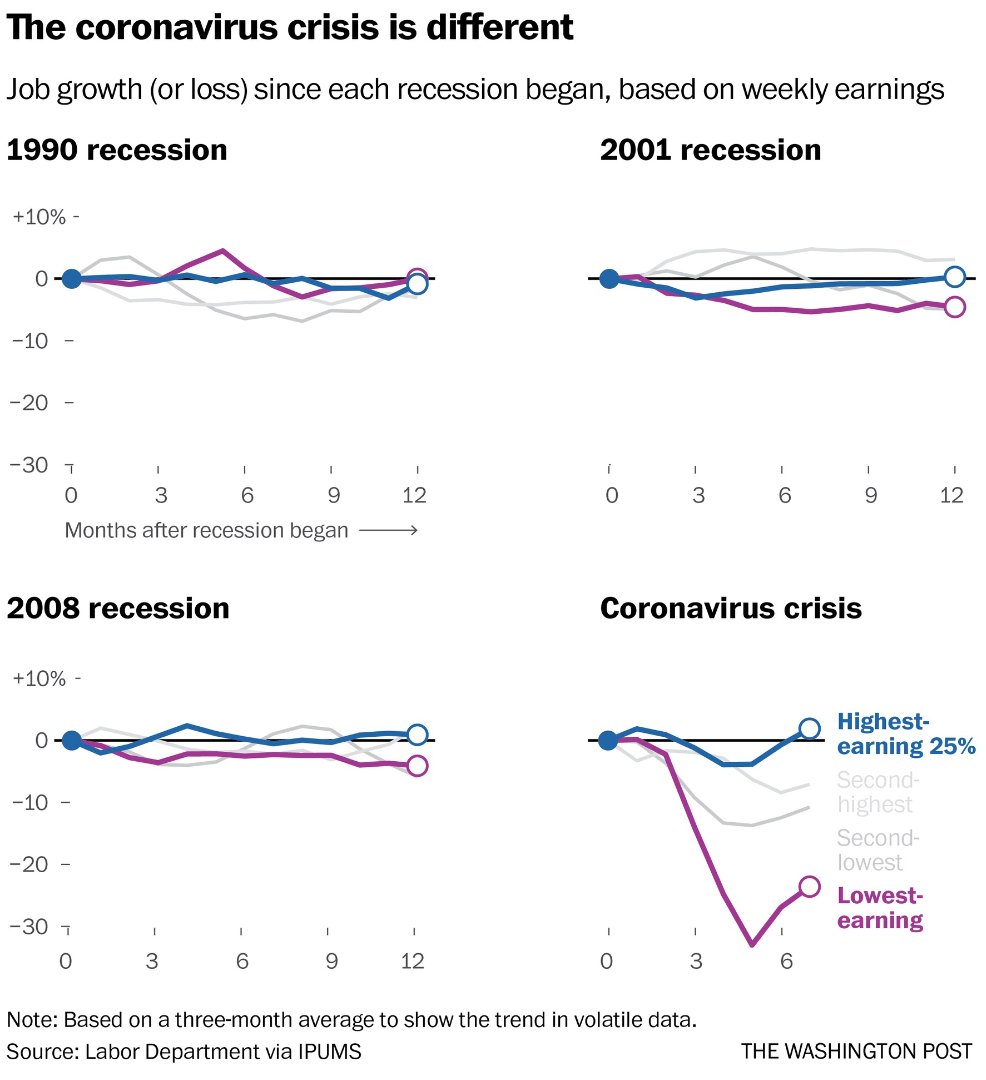
Last week, @NSClearinghouse released some preliminary data on enrollments (It represents about 22% of IHEs.) which looked surprisingly not bad for 4-yr institutions, but terrible for community colleges. Source: nscresearchcenter.org/stay-informed/ 
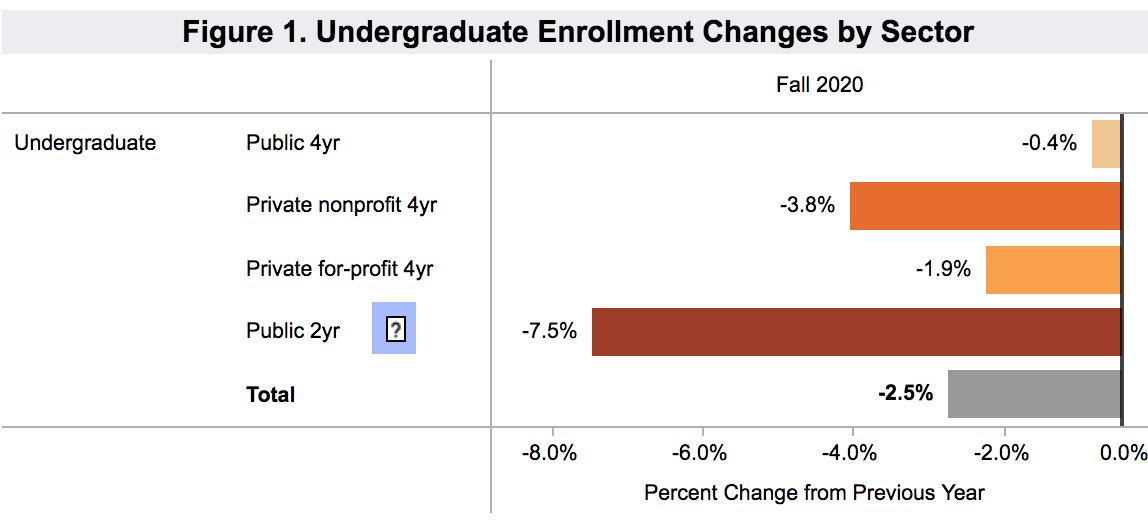
What's notable is that during the last recession, community college enrollment went up. What's different this time?
source: ccrc.tc.columbia.edu/easyblog/commu….
source: ccrc.tc.columbia.edu/easyblog/commu….

The difference this time: COVID and the recession have been a dual disaster for the poor and other groups that make up a larger portion of 2-yr enrollments. They have suffered disproportionately in terms of health and employment. 

Poor people are much more likely to attend 2-year colleges. Only 36% of people in the lowest quintile who attended any postsecondary institution went to a 4-year school. In the second quintile that number is still below 50%.
source: nces.ed.gov/programs/coe/i…
source: nces.ed.gov/programs/coe/i…
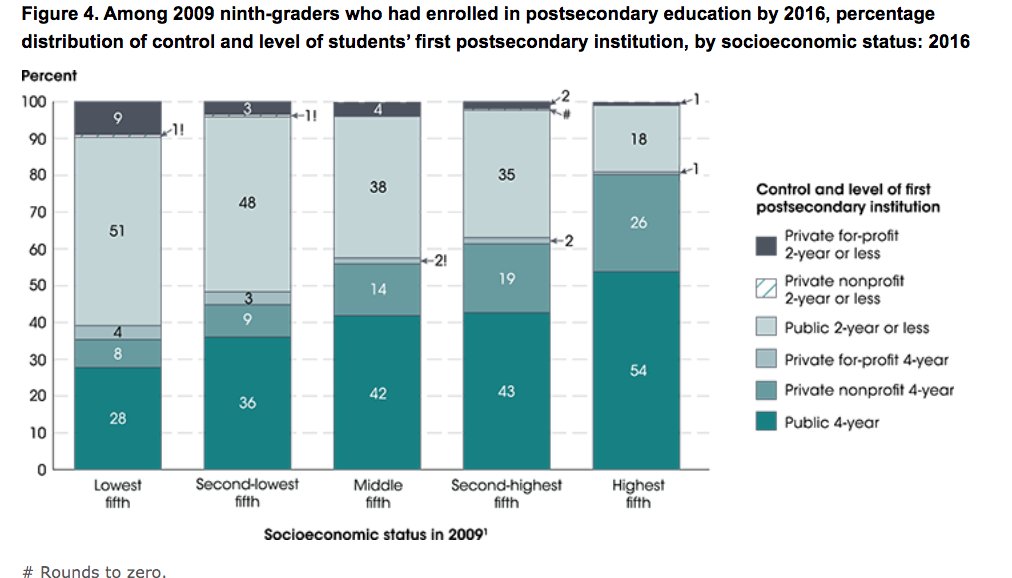
COVID also been especially terrible for people in their 20s and early 30s when it comes to jobs. 2-yr schools enroll a not just more poor people but more students over 24. 
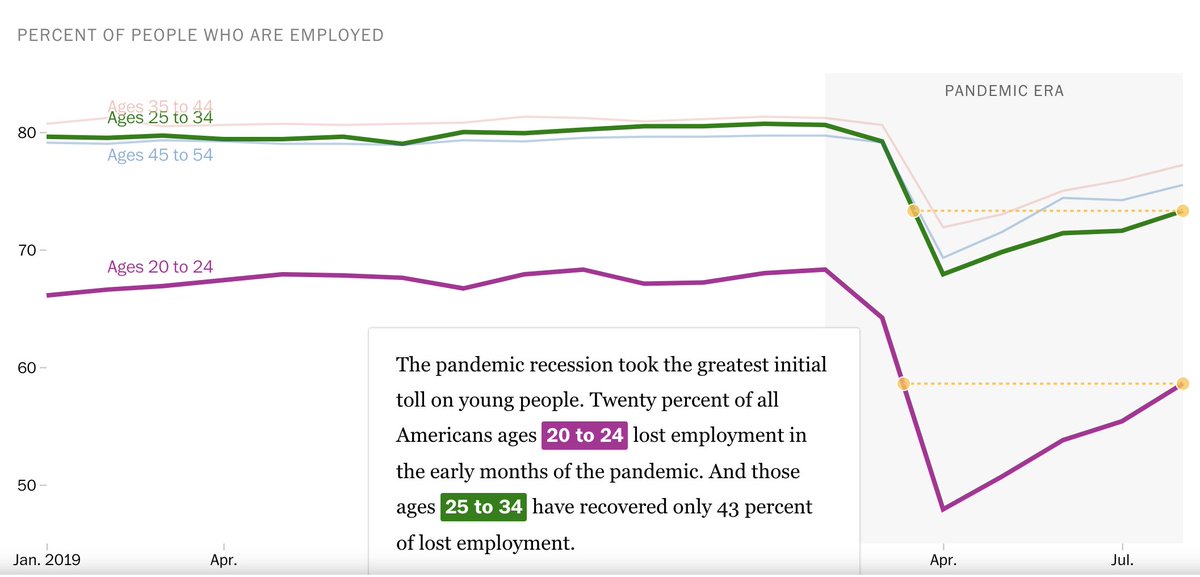
During the last recession, even as total enrollment and revenue at community colleges rose, funding per FTE declined. That will definitely happen again. It's already happening in some states. 
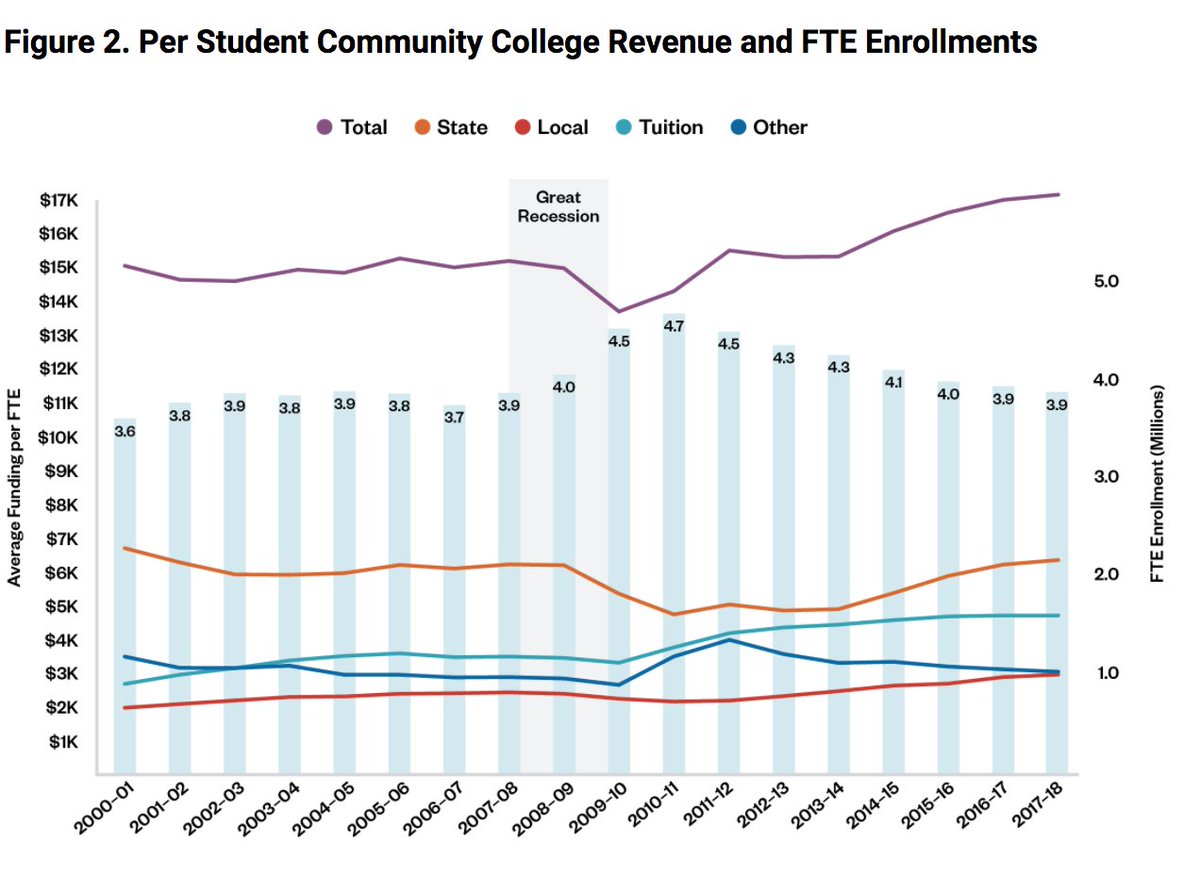
The decline in community college enrollment + the deep cuts in state funding for community colleges present a dire threat to these institutions, which will likely have to respond by cutting services that increase retention, transfer, and completion, not to mention feed people.
In a nutshell, things are terrible. And they're going to get worse, especially if Republicans hold the Senate and we continue to suffer delay after delay in relief funding.
• • •
Missing some Tweet in this thread? You can try to
force a refresh












